Color Coded Calf Rearing- Solutions Summary
Raising calves can take a lot of hard work and dedication. In the end the rewards of satisfaction in a healthy animal, and the increases in future production are well worth it! Setting goals and monitoring results in these 5 areas will ensure success in your calf rearing program!
1 – Colostrum
- Ensure colostrum is clean
- <100,000 cfu/ml bacteria
- <10,000 cfu/ml coliform
- <1,000 cfu/ml E. coli
- Administer the highest quality colostrum to the calf in a timely manner after birth.
- For instructions on how to assess colostrum quality click here.
- Volume
- Feed a calf 5-6% of their body weight in high quality colostrum as soon as possible after birth. The animal can benefit from a second feeding of high-quality colostrum 6-12 hours later. A total of 10% of body weight in colostrum in the first day of life.
2 – Cleanliness
- Keep the maternity area clean, dry, and well bedded.
- Properly wash and sanitize equipment. For detailed steps visit our previous blog post Color Coded Calf Rearing - Disease Prevention.
- Maintain clean buckets for food and water.
- Calf housing should follow an all-in all-out principle. Clean and disinfect hutches between calves. If possible allow them time to rest before putting in a new calf. Keep hutches dry and well bedded.
3 – Nutrition
- Ensure calves have adequate nutrition for maintenance and growth.
- Discuss milk feeding programs with your Nutritionist or other knowledgeable sales person. For more information on different milk feeding programs visit our previous blog post Color Coded Calf Rearing - Milk Feeding Systems.
- Offer free choice water and a properly balanced starter at 3-7 days of age. Monitor intakes and initiate the weaning process when the calf consumes 2 lbs. (909 g) of starter for 3 consecutive days in a row.
4 – Individual Needs
- Each calf is different and should be evaluated on an individual calf basis. Observe calf behavior for early identification of disease.
- Treat calves individually and not as a whole mass.
- Weaning age and even milk volume fed may be determined on a calf by calf basis.
5 – Animal Welfare
- Ensure proper animal handling by properly training employees.
- Follow through with accountability to motive employees to handle animals humanely and to perform tasks per proper protocol.
- For resources for employee training visit the National Dairy FARM program.
Written by: Mariah Gull, M.S.
